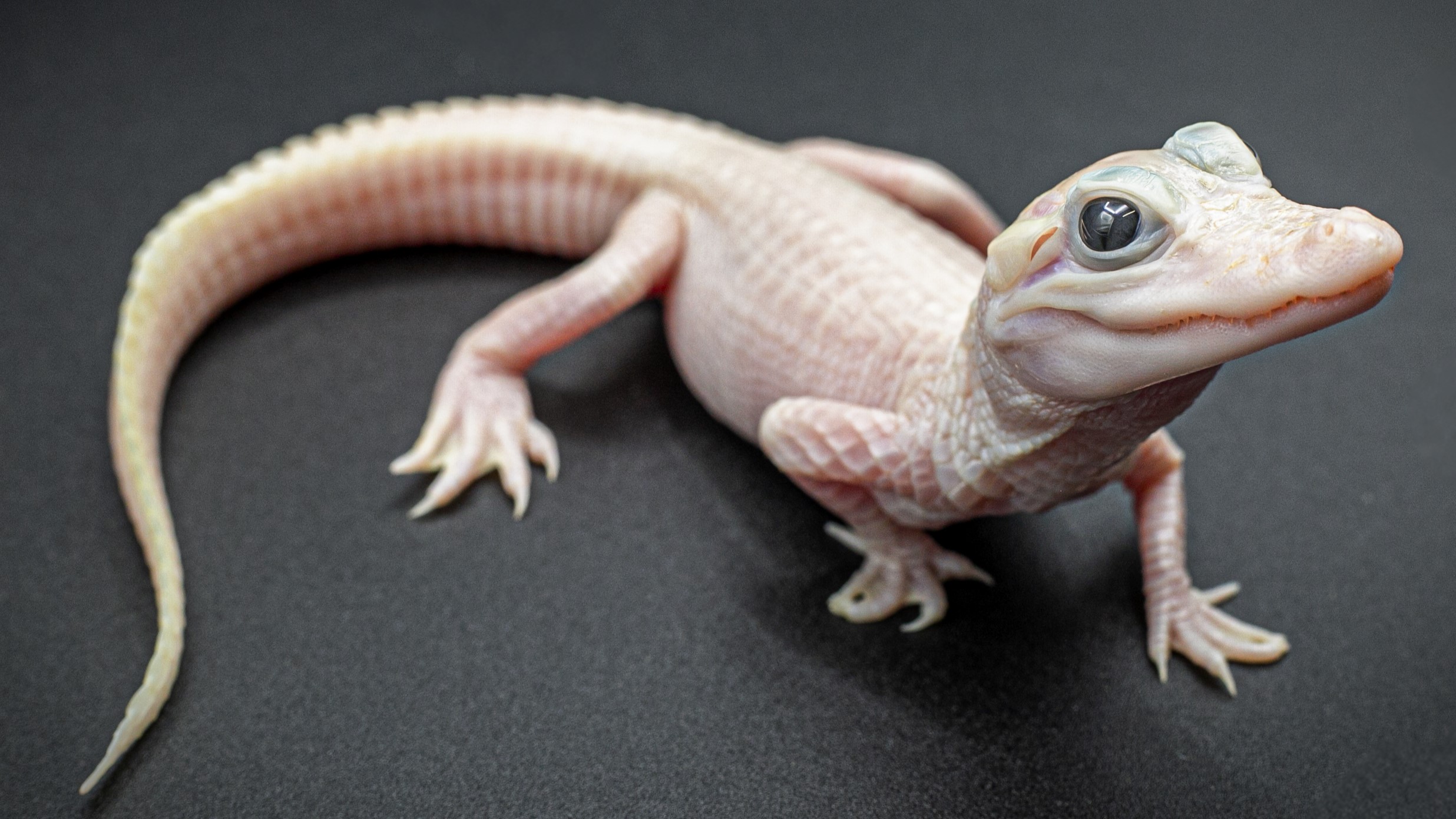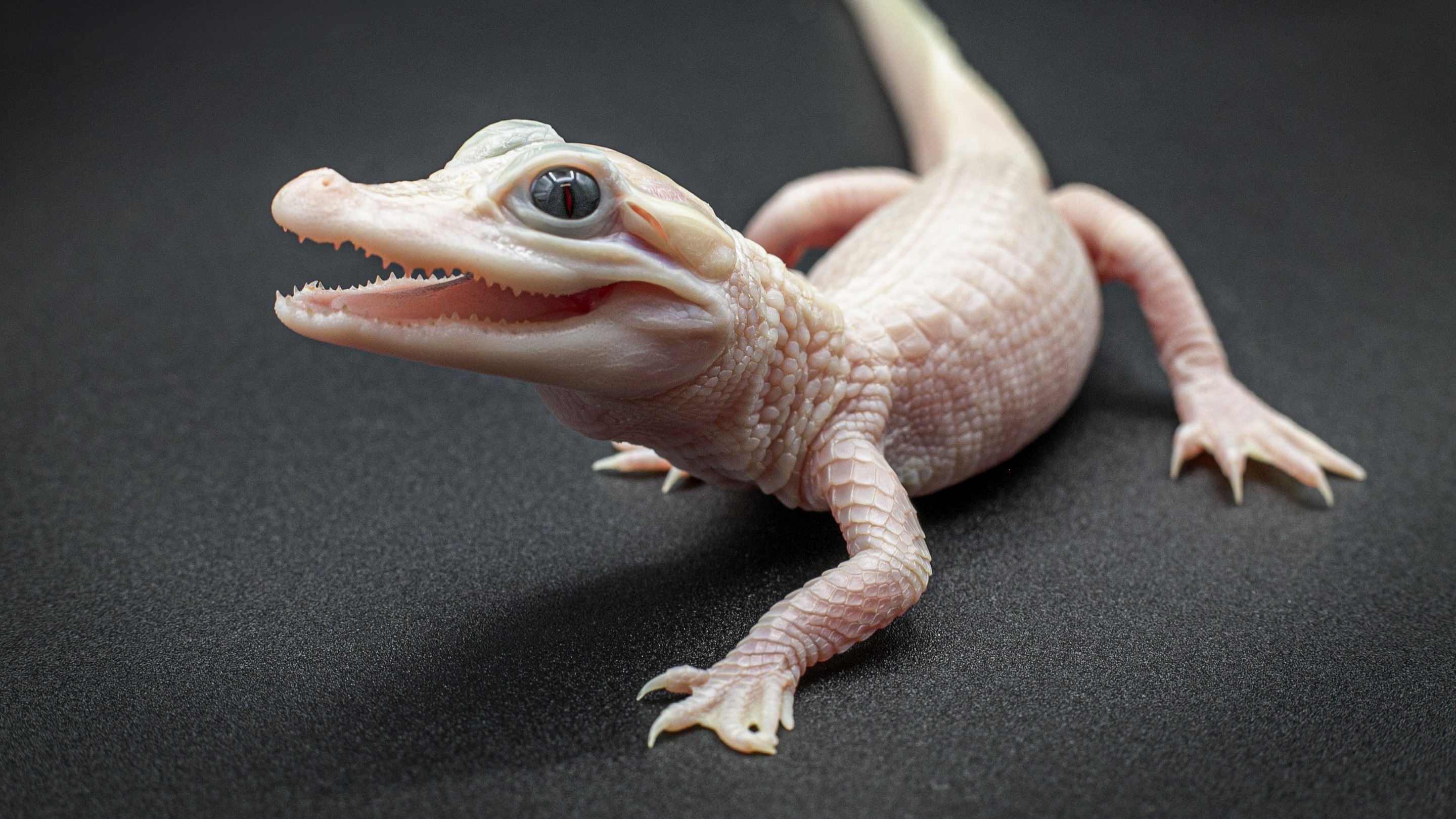Pinky-white leucistic alligator with blue eyes born in Florida is 1 of only 8 in the world
An extremely rare leucistic alligator born in Gatorland, Orlando, is the result of a genetic condition that leads to the partial loss of skin pigmentation, resulting in white or translucent skin.

An exceptionally rare light-pink alligator has been born at Gatorland, a wildlife park in Orlando, Florida.
The female American alligator (Alligator mississippiensis) has a genetic condition known as leucism, which results from a mutation in the genes that leads to reduced pigment in feathers, hair or skin. Unlike albinism, which results in pink eyes and a complete loss of skin pigment, animals with leucism only have a partial loss of pigment and normally have blue eyes and white, translucent or pale pink skin.
The newly born reptile is believed to be one of only eight leucistic alligators in the world. They are very occasionally born in the wild, but rarely survive beyond infancy due to health problems.
Because leucistic alligators lack normal skin pigmentation and thus sunburn easily, they cannot be exposed to sunlight for long periods and are at higher risk of sun damage and skin cancer. Leucistic alligators are also rarely seen as adults because their skin means they are easily spotted by predators.
However, the baby alligator is in good health and currently measures 19.2 inches (49 centimeters) long and weighs 3.3 ounces (96 grams), park representatives said.
Related: Extremely rare white killer whale spotted off California coast
It was born to a mother who did not have leucism but carried the genetic mutation for the condition and a leucistic father. (Because leucism is a recessive condition, two copies of the genetic variant — one from the mother and one from the father — are needed for the condition to result in observable traits.) The leucistic alligator was born alongside a non-leucistic male, who is the same size.
Sign up for the Live Science daily newsletter now
Get the world’s most fascinating discoveries delivered straight to your inbox.

Footage shared by Gatorland showed the pink leucistic alligator freshly emerged from its shell.
The color of leucistic alligators may change over time because, unlike albino animals, they still have the genes for pigmentation.
A study published in 2020 detailed the extraordinary finding of six leucistic American alligator hatchlings in South Carolina in 2014. The animals were underweight when they were found, and three died shortly after being collected. The remaining three alligators lived in captivity for several years until their deaths.
"They weren’t going to survive," lead author Thomas Rainwater, a research scientist at Clemson University in South Carolina, said in a statement released at the time. "They were all fairly emaciated, often have congenital health defects, and are easily detected by predators.
"Rather than letting nature take its course in this case, or having the hatchlings possibly poached by reptile traders, we collected the alligators in an attempt to nurse them to better health and potentially capitalize on their value in wildlife education and conservation," he added.

Lydia Smith is a health and science journalist who works for U.K. and U.S. publications. She is studying for an MSc in psychology at the University of Glasgow and has an MA in English literature from King's College London.










